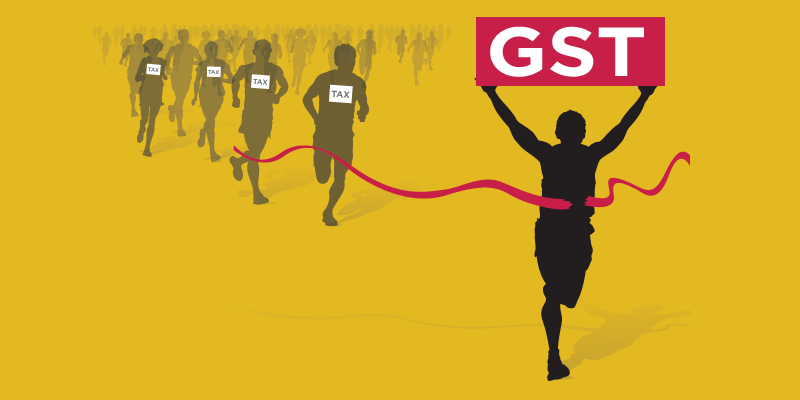GST, what is this law? How big an overhaul is it? How can we prepare for it. And the most important question on everyone’s mind is, Is it good for us people? Well in the end, it is. Allow me to evince how this law is a radical overhaul of the taxation system and how we, the prompt tax payers can benefit from it.
It would be a comprehensive indirect tax on manufacture, sale and consumption of goods and services across India, and will alternate taxes levied by the central and state governments. Goods and Services Tax would be levied and procured at each stage of the sale or purchase of goods or services and thus it can be tracked throughout on all accounts. This practice allows GST-registered businesses to claim tax credit to the equivalent of the GST they paid on purchase of goods or services as part of their normal commercial activity. Taxable goods and services are not differentiated from one another and are taxed at a single rate in a supply chain till the goods or services reach the end consumer. Administrative responsibility would predominantly rest with a single authority. Exports would be zero-rated and imports would be levied the same taxes as domestic goods and services adhering to the destination principle.
The fundamental complications that GST will tackle are that there will be only one administrative authority, which will slash the inconvenience of negotiating with multiple authorities each being discourteous about the rest. This model ensures a tangible cut in time in the filing process.
Amalgamating several Central and State taxes into a single tax would mitigate cascading or double taxation, opening doors for a common national market. From the consumer’s perspective, the enormous asset would be the rebate in the overall tax burden on goods, free movement of goods from one state to another without pausing at state borders for hours for payment of state tax or entry tax and briefer paperwork to a large extent.
Previously the earnest tax payer would not get the laud that they deserved and as far as the story of the defaulter goes, no one would hear about him, who, as in most scenarios would resolve the issues in unconstitutional ways. To stock up adequate incentive for compliance, an enterprise will be rated by the clients who get a rebate only after the enterprise fills its dues. This rating will be open to the public and can be reviewed to evaluate the obedience of that enterprise. A good rating can be advertised to secure future contracts. In conjunction, an enterprise in the habit of non-compliance will receive a low rating, this can be used to infer the character of the enterprise before initiating business.
If the annual turnover is limited to 20 Lakhs GST shall not be applicatory. For turnover between 20 and 50 lakhs, a scaled down variant of GST will be applicable. 50 Lakh plus shall rope-in full fledge GST rates. The tax slabs, depending on goods and services would be fixed among 5%,12%, 18%, and 28%. 5% and 12% being on select goods and services that shall be indexed by the government. 18% is the normal tax slab and 28% is the “sin tax slab” applicable for goods or services relating to alcohol, tobacco etc.
All transactions, even small ones hereon after must be declared and a bill must be obtained for the same. Not only can big expenses such as travel or office supplies be declared as expenditure, also small expenses like tea and biscuits can be shown as operational costs and can give an advantage for the enterprise by reducing the tax liabilities. Many such small provisions under the bill when used appropriately will reduce the burden. Such provisions are latent in the present system but are not used due to the complications they involve. Hence it is imperative to know what provisions are present and how they can be used to our advantage.
Small bugs such as the tax rebate of VAT or CenVAT equivalent tax being available only on electronic ledger, and not being non-redeemable in other forms is cause for concern. Other such gray areas in the bill are to be addressed by Mr. Jaitley. Mr. Jaitley has affirmed that all these issues will be resolved before the bill is administered.
Demonetization is a facelift given to the Indian economy and just as it was a part of a bigger picture, so is the enforcement of the GST bill. Connecting everyone to the banking network by demonetizing the old currency forces a larger population to come under the ambit of GST. This renowned and well established system in other countries, when applied to the Indian economic system, demands a few adjustments, but at large it is not only going to be better model but also a happier experience for the “aam aadmi”.
So the biggest question that faces us is, will it be administered by april 2017? Rumors run that it might be audited in forms to benefit a certain class of people. Will this rumor turn out to become a reality and defy the whole point of GST?



awesomely showcased. Good work.
Good informative article. I like the way you described the entire process.